If you know how to breed bearded dragons (Pogona), the entire process will be fun and profitable. This process includes knowing everything from sexing the dragons, incubating the eggs, hatching them, and taking care of the baby beardies.
If you are a first-timer, you will need a complete guide that will tell you ins and oust about the breeding process. Well, this article has everything that a beginner should know. One should know many technical and medical factors while starting breeding.
Stick with this article and step toward a successful bearded dragon breeding procedure.
Things You Should Know About Breed-Bearded Dragons
You can breed bearded dragons all around the year. So, most of the time, it stands comparatively more profitable and easier. Before you jump into the process, you must know a few things about bearded dragons.
Popular Facts About Bearded Dragons
Breaded dragons are fun reptiles to have as a pet. They are quite popular around Australia. They have an interesting connection with colors. Even while eating, if they feel attracted to any particular color, they will only pick that colored food.
Most bearded dragons seem to be playful during the daytime. They neither require high maintenance nor are expensive like other pets. Also, because of their longer lifespan and peaceful nature, people prefer them to get as a pet.
A bearded dragon’s beard is essential to its anatomy and behavior. They use it to communicate with other lizards and reptiles.
Sexual Maturity and Sexing Bearded Dragon
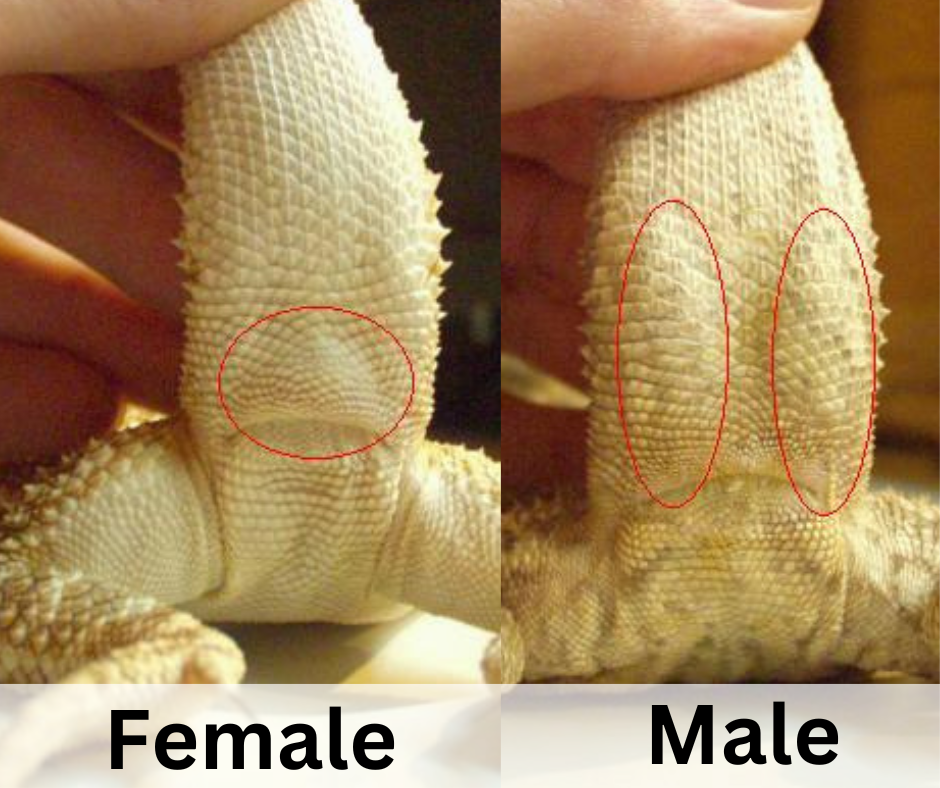
This is the most important part to discuss before you start working on the procedure for bearded dragons. Generally, bearded dragons achieve their sexual maturity in the fourth stage of the life cycle. If you want to work on them, ensure both bearded dragons have full sexual maturity.
Generally, the best time for sexing two mature bearded dragons will differ regarding their gender. Female dragons can make it at least 18 months after birth. For male dragons, it might take around 24 months.
However, some achieve sexual maturity by the 6th to 15th months. You can also check the pre-anal pores to determine sexual maturity. Male ones must be larger leaner bodies and bigger and wider heads for sexing.
Another fun fact is bearded dragons can get eggs without mating. Once the female bearded dragon is matured, it can be gravid. In such a case, the eggs will stay infertile. You should introduce male and female breaded dragons for successful breeding for a few weeks.
They generally require 4 to 6 weeks to lay eggs. Another trick is to keep them in groups. This will increase the possibility of making the process more successful.
Preparations Before You Start
Preparation before breeding can be mentioned as brumation. Allowing bearded dragons to complete their brumation cycle before starting is recommended. It requires collecting everything that a healthy process must have.
Take The Bearded Dragon To The Veterinarian
Improper sexing can lead to mating or dietary issues. If you’re unsure about sexing a bearded dragon, seek the advice of a veterinarian or an experienced reptile keeper. You better take your bearded dragons to a trained herp vet. They will guide you through the ins and outs of the process.
There are many factors that a vet can test and see if two bearded dragons can breed or not. For example, adenovirus-positive bearded dragons can pass it to their babies. So, it might not be suitable to get in. Also, if the bearded dragon doesn’t show signs of mating, it will need a vet check-up.
Besides, the vet will check your pet’s age, weight, and length before deciding. All these factors are essential to start the process.
Healthy Body Weight Of Bearded Dragons
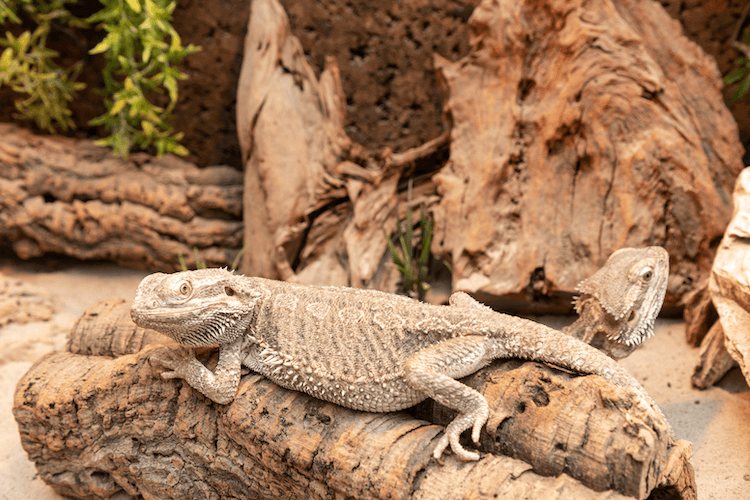
Female and male dragons differ in weight in length for sexing. After 18 months of birth, your bearded dragons will be fully grown. You can check their body weight to get the exact detail of their health.
Check the table:
| Basis | Female Bearded Dragons | Male Bearded Dragons |
| Length | 16 to 19 inches | 19 to 24 inches |
| Weight | 350 to 550 grams | 400 to 550 grams |
Diet of Female Beardies
A female dragon’s diet consists of various leafy greens for laying healthy eggs. To reach the required vitamins, you can feed them kale, collard, mustard, and dandelion greens.
Geen vegetables will make up about 80% of their diet. The remaining 20% should consist of insects. You can feed them crickets, mealworms, and super worms. Choosing appropriately sized insects to prevent choking and digestive issues is also essential.
It would help if you supplemented the diet with calcium and vitamin D3. All these will prevent metabolic bone disease. Also, provide fresh water for the bearded dragons to have a healthy digestive system.
Prepare The Enclosure
You need to have good preparation before breeding. Let the female and male beardies live together for a few weeks to arrange the habitat well. Get a lay box that will have enough space for your bearded dragons.
Glass aquariums are popularly used as lay boxes. You can observe them thoroughly with such boxes. The box should be comfortable enough for the female beardies. You should fill the box with sand or potting soil. Make sure you use the soil is damp enough to dig in, as the bearded dragon will try to bury the egg by burrowing it.
Also, remember the temperature should be around 77 to 88 degrees during daylight and 70 degrees at night in the habitat. Full-spectrum light bulbs work well to produce enough Vitamin D. To make the process more successful, you can arrange an incubator. The incubator will keep the eggs warm and healthy.
Steps of The Breeding Process
Well, it is time to get into the real process. If you’re done with all the preparation for the process, consider going with the steps individually.
Learn how to breed bearded dragon:
Step 1: Place and Observe the Beardies
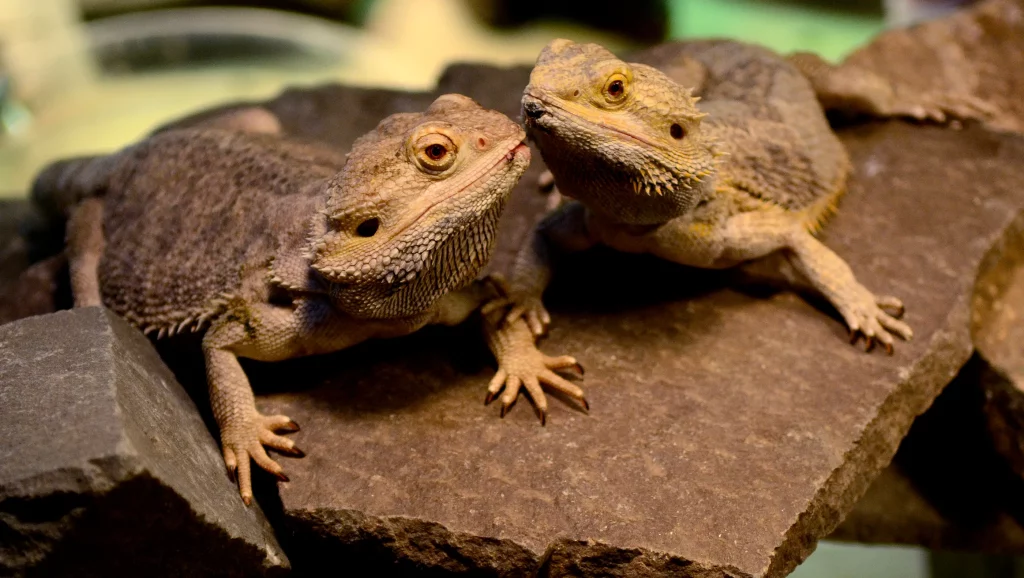
You should place the female and male beardies together in the right habitat. It is time to observe their behavior to identify if they are ready. The courtship behavior should be appropriate for the right sexing.
The dragons will twitch the tails of one another while mating. They can also climb on the back of female ones and bite the neck. These are positive signs of having successfully born dragons soon. You can observe hemipenes ( sexual organs of the male beardies) movement to know if they are mating or not.
If you see no courtship behavior, consider placing several dragons together to make a friendly environment.
Step 2: Separate Male Dragons
Well, the entire mating process happens in a few minutes only. And this can happen only in a week. You should separate two dragons after mating and place them into separate boxes.
This is the time when yous should be conscious about having a comfortable box for the beardies. Male dragons are typically more aggressive and should be separated for safety.
Step 3: Let the bearded dragons lay eggs
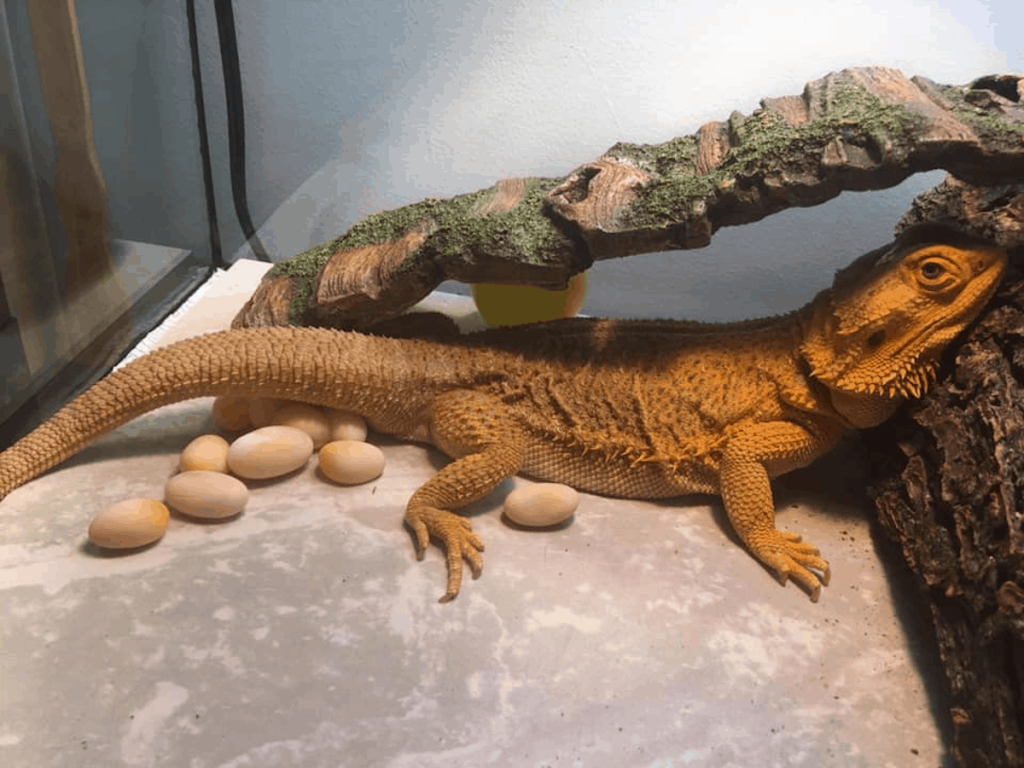
As the mating process is done, your dragon will need vitamins and calcium supplementation to have a healthy diet for getting eggs. Feed the dragons the required food and keep them hydrated. They will lay eggs weeks after a successful mating.
After six weeks of mating, the dragon will look anxious, dig into the soil, and will start eating less. And the bearded dragon will lay her eggs within a few weeks. Ensure there is enough moisture in the box until egg-laying occurs.
Well, the bearded dragons lay their eggs in 15 to 50 eggs. In general, they lay 24 eggs at once. All these bearded dragon eggs together are known as clutch.
Step 4: Separate the eggs & incubate the hatchling
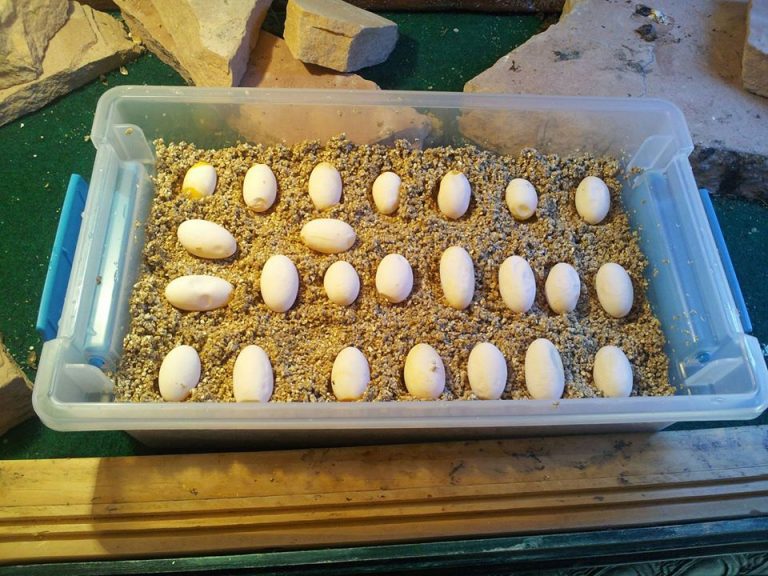
After a few weeks of separation, the dragon will lay her eggs. Then, place the female one in a separate cage and clean the sand from the eggs. Dragon eggs should be incubated to keep them safe and healthy. You should check the incubator regularly to hold up the required temperature. You should place the eggs in the same orientation to avoid confusion.
A good incubator can hold multiple clutches together. Get a commercial incubator and place the clutch inside them in an organized way. This incubator will maintain 82 to 86-degree ferrite temperatures for the eggs.
Once the eggs hatch, you need to care for the hatchlings. Beardies will require different baking lights at different stages of their life. Baby bearded dragons will require a warm side temperature (95 to 100 degrees Fahrenheit).
The hatchlings require a specialized diet, temperature, and humidity levels. Also, you need to fill the box with vermiculite. However, there has a lot of arguments over the fact whether vermiculate is safe enough or not. To keep them healthy, you better consult with your vet.
Step 5: Observe the Hatchling

Well, if you keep observing the eggs, you will see them maturing day by day. They will slowly develop water droplets. The embryos inside the eggs will fully develop in 60 days. This is absolutely natural, and data certain times, you will get to see the exterior of the egg.
Once the baby is mature enough, it will emerge from the eggs; well, in this entire process, you don’t have to do any extra help. This is an entirely natural procedure that takes 24 to 36 hours.
The eggs will hatch, and the baby bearded dragons will come out on their own.
Step 6: Separate baby bearded dragons according to their size
Once the baby dragons are out of the hatch, you should get them into the enclosure. Prepare it with moist paper towels and keep the habitat moisture. You can use a paper towel as a substrate in their box.
Using a towel gives a chance to avoid impaction risk. You might have to look after these babies for the first few weeks. Well, don’t forget to create some hiding place in the box. This will give them comfort spot to grow healthy.
Should I Keep Male and Female Dragons Together?
You should not keep female beardies with male ones together after a certain stage. If you want them to live together after sex, there has a huge possibility of an unsuccessful attempt.
The main reason behind it is male ones are bigger in size and quite dominant towards female ones. During the dragon season, the male beardies seem to be more aggressive. And this can lead to potential injuries.
Morphs: Selective & Profitable
Beardies come in different colors and patterns, including citrus, hypomelanistic, and leatherback.
A bearded dragon morph means genetically altered or selectively bred beardies. Breeders produce different of them through selective breeding every year.
These procedures result in unique combinations of colors, patterns, and characteristics among bred dragons.
Rarest Types of Bearded Dragon Morphs: Profitable Ones
Some dragons are always in demand because of their unique physical characteristics. Well, here, you can give a quick check on several rarest dragons. Having them can get you a good amount of profit.
Standard
This type of beardies typically has a yellow to tan color with darker markings on its back and tail. They usually carry a calm temperament and are easy to care for. Standard dragons can grow up to 24 inches in length and live up to 10-12 years with proper care. Their backs will be covered with spikes and have triangular-shaped heads.
HypoTranslucent
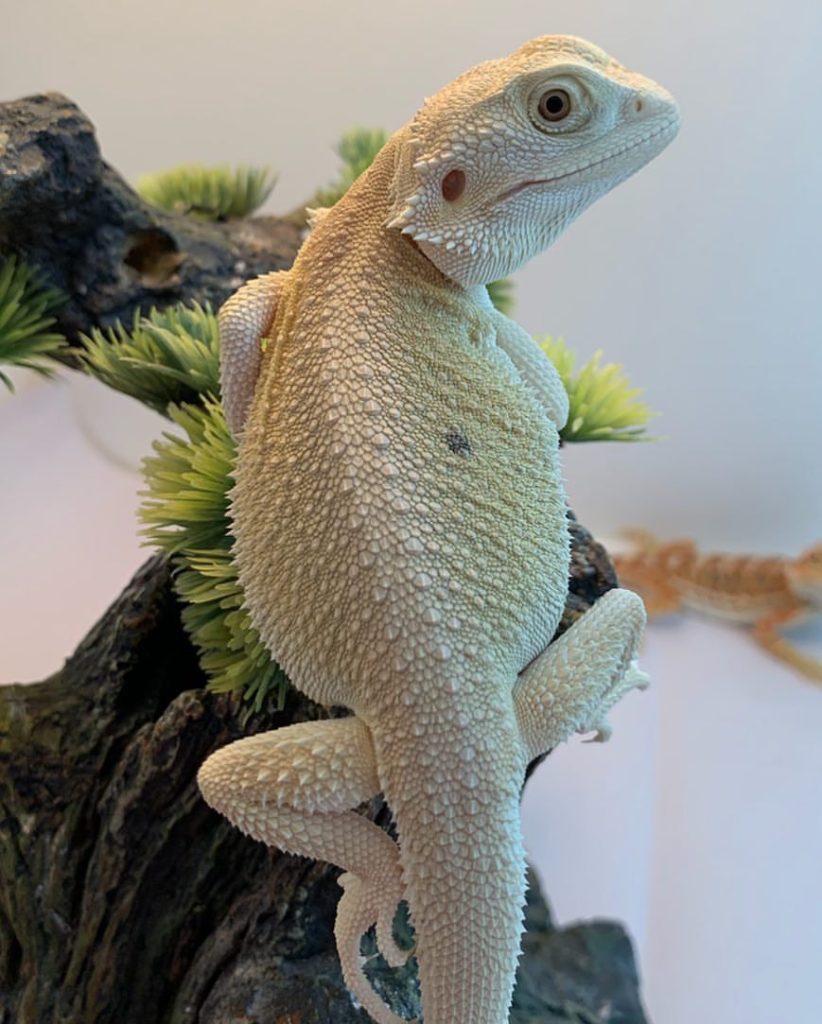
These dragons combine the hypomelanistic and translucent genes to create a very light-colored dragon that is also partially transparent. They will give a more plastic coloration and less dark patterns over their skin.
Translucent
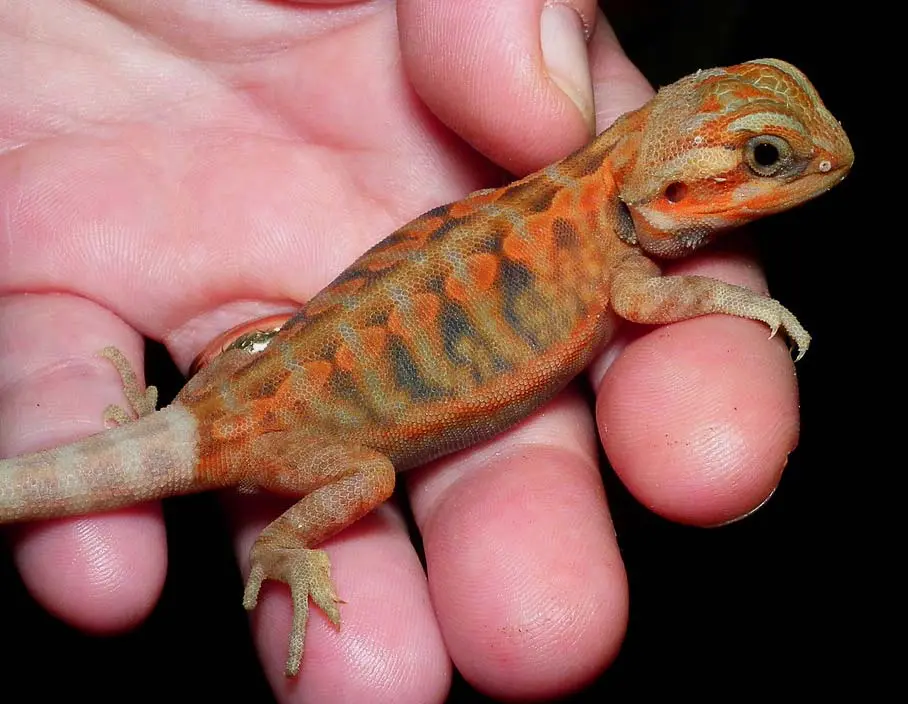
This type is often used as a defense mechanism or to attract prey, allowing the organism to blend in with its surroundings and become nearly invisible. Baby Translucent has a blue belly, darker eyes, and blue eyelids. Their eyes are one of the most attractive parts of these dragons.
Silkback
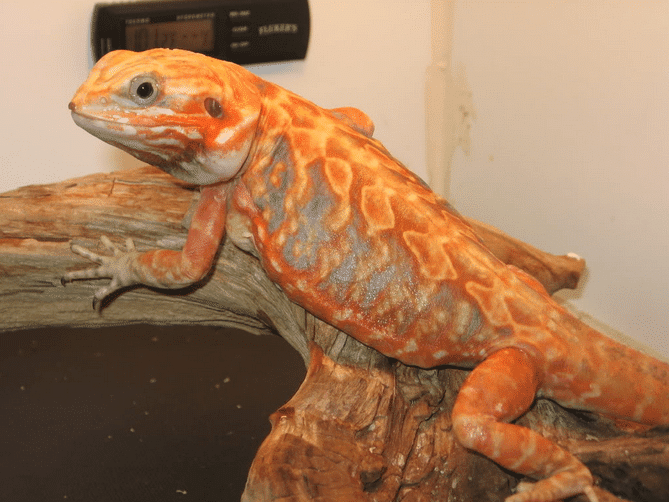
These dragons have completely smooth skin. They have no spines on their body due to a specific gene mutation. Their missing spikes are the unique characteristic of their body. They are named after their silky and soft skin.
Giant
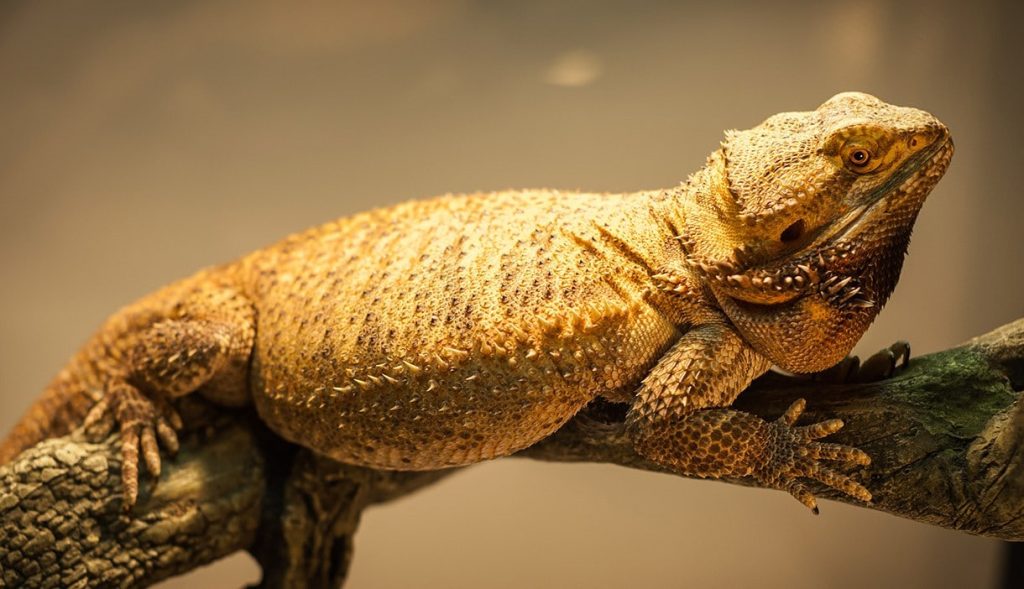
This type is bred for its larger size and robust build. They are typically 20-24 inches long and weigh 600 grams or more. You can only identify German giants after growing up fully. They have a similar appearance to standard ones.
How To Achieve Bearded Dragon Morphs By Breeding?
A well-planned selective breeding is the most effective way of getting profitable ones. If you know the basics of the process, this will be easier.
First, you should choose which type of dragons you want to produce. You need to choose the traits of beardies you want together. People generally go for unique colors, skin, patterns, and other characteristics to gain maximum profit.
Once you’ve selected the attributes, you can get your male and female dragons checked by an experienced vet. If the vet assures you they are able to produce fertile eggs, go with the regular process.
Wrap Up
Breeding for dragons is a complex process that needs careful selection of stock and genetics. It is important to note that experienced breeders should only do this with a vet’s consultation. If you know the right process, this process will turn into the most fun thing for you. Once you have chosen the parent beardies and determined the genetic traits, you must plan the entire process. You will get maximum profit through successful breeding if you can do all these well.



